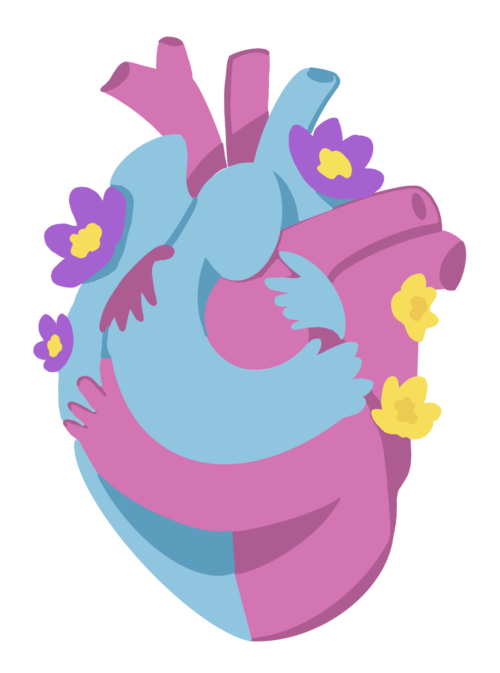Tucked between a common room, laundry machines, and the Office of BGLTQ, some of Harvard’s most useful peer counseling resources remain hidden. While Harvard’s Counseling and Mental Health Services (CAMHS) boasts a plethora of professional support, the peer counseling resources offer a private yet welcoming space free from judgment.
Harvard has six different peer counseling resources approved by CAMHS. The first is Room 13, the broadest of the six, covering topics anywhere from school concerns to substance issues. Room 13 can be found in Thayer Hall basement B-09 every night. RESPONSE deals with relationship issues and concerns of sexual assault and harrassment and can be found in Lowell House EL-15, Sunday through Thursday. Harvard Eating Concerns Hotline and Outreach (ECHO) addresses concerns associated with body-image or eating and can be found in Eliot House basement T-24 on Sundays through Thursdays.
Indigo covers the intersectionality of race, gender, identity, and sexuality and can be found in Thayer Hall basement B-01, next to the Office of BGLTQ, every night. Harvard Undergraduate Group Peer Therapy (HUGPT) assists students in a group setting where each student shares their own wisdom to promote clearer communication. Contact supports issues regarding LGBTQIA+ and identity and can be found in Thayer hall Basement B-04 every night.
Beyond being peer led, these programs are unique in that they are “non-directive.” This means minimal guidance or direction is given, allowing the individual to lead the conversation or problem-solving process. These programs provide a place to vent one’s concerns without feeling judged or analyzed. “[We] really [try] to mirror those feeling words so that we don’t maneuver the drop-in towards any sort of solution, but rather just hear their thought process,” explained Annika Gagnon ’25, a co-director of Contact.
What goes on behind the scenes to make these resources work? Each group is made of volunteers willing to sacrifice their time to help others. “Every week we have an hour-long meeting with Harvard University Health Services (HUHS) and CAMHS supervisors, just to make sure everything is HIPAA compliant and that everything’s up to standard,” Gagnon shared. “We have a little over 20 staffers…so we try to staff people four times a month,” she explained.
Despite these large time commitments, volunteering for these peer counseling groups has its benefits. Having spent three semesters with Contact, Gagnon has experienced her fair share of weekly meetings with HUHS but said these meetings often offer the opportunity for members to check in with each other. “It was really a lovely connection that I had not experienced outside of my friend group at Harvard,” she said. “I joined and just completely fell in love with the community.”
Beyond fostering a strong community, working for peer counseling groups offers personal development and self-discovery. This focus on self-discovery is especially important when considering challenges that many students face, like Duck Syndrome, where students glide smoothly on the surface while secretly struggling underneath. Gagnon, however, has gotten a glimpse underneath the water. “Experiencing that vulnerability kind of goes both ways… Seeing so many people being open and honest about those paddling feet, where it’s not so smooth like you see above the surface, has been very gratifying,” she explained. Furthermore, working with Contact has affected Gagnon’s work-life balance. “Being part of Contact has allowed me to slow down and focus on quality rather than quantity in all sorts of aspects of my life, and I think it’s also shown me how much I need and value strong community in my life,” she revealed.
To join a peer counseling group, each applicant must go through an interview process. For Contact, the first interview aims to get to know the applicant’s counseling style. “One thing that we really value in the interview process is we’ll give feedback during that first interview… Then, during the second interview, we do another mock drop-in and see how well they take that advice and implement it into their own style,” Gagnon shared. The interview process concludes with a final decision made by the whole group.
Gagnon also described the strategies utilized to encourage discussion. “When a drop-in is really nervous…we try to wait—sit in the silence until it gets awkward, and then wait a beat longer,” she shared. “I really think that it’s okay for someone to kind of sit in and take that moment of grounding.” When the drop-in does feel confident to speak, the counselors take their non-directive approach and let the drop-in control the conversion. “It’s super helpful to just hear your thoughts out loud and makes it feel more organized,” explained Gagnon.
Harvard’s peer counseling resources provide a valuable and often underappreciated alternative to formal counseling services, offering students a private, supportive space to navigate their challenges. But further, these groups provide the opportunity to connect with peers seeking assistance, a tight-knit community, and even yourself. So, take a peek behind those doors—you might just find what you need.
Tyler Dang ’28 (tylerdang@college.harvard.edu) is comping the Independent.

